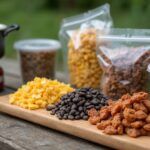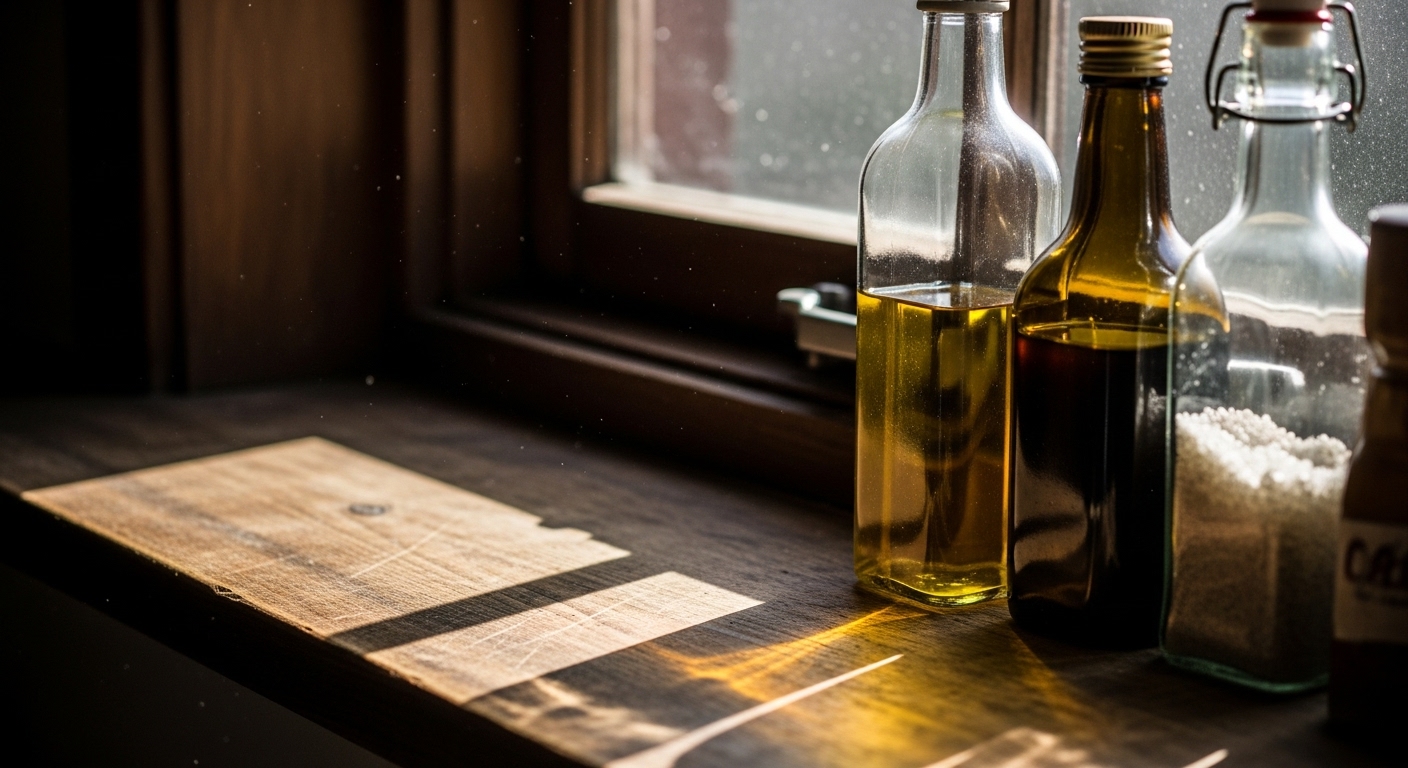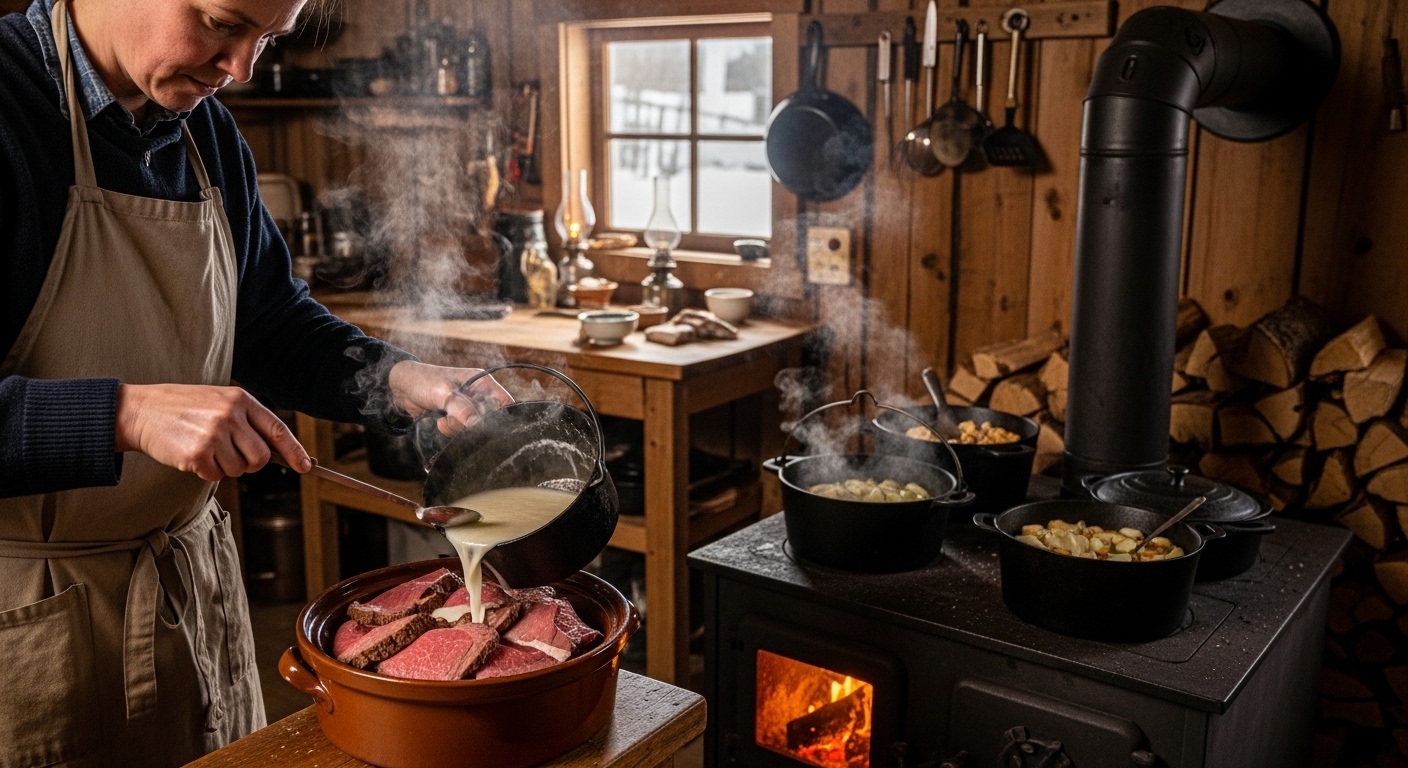Fermentation may be the most fascinating of all ancient preservation methods. Without even knowing the science of microbes, ancient peoples mastered the art of transforming foods into something more flavorful, nutritious, and long-lasting.

In Mesopotamia and Egypt, fermentation gave rise to beer and bread—daily essentials that sustained entire civilizations. Across Asia, the process birthed soy sauce, miso, tempeh, and kimchi, while in Europe, milk and vegetables became yogurt and sauerkraut.
These fermented foods not only lasted longer but actually became healthier. The process preserved vitamins, improved digestion, and created beneficial bacteria that boosted immunity—centuries before modern science understood probiotics.
Today, homesteaders and gardeners are rediscovering fermentation as both an art and a science—connecting us directly with our ancestors’ kitchens.
🧄 5 Time-Honored Fermentation Recipes
1. Classic Sauerkraut
Ingredients:
- 1 medium green cabbage (about 2 lbs)
- 1½ tbsp sea salt
- Optional: caraway seeds or garlic
Instructions:
- Shred cabbage and place in a large bowl.
- Sprinkle with salt and massage until it releases liquid.
- Pack tightly into a jar, submerging cabbage under brine.
- Cover with a loose lid or cloth; ferment 7–14 days at room temperature.
Tip: Taste daily after the first week—refrigerate when tangy and crisp.
2. Homemade Yogurt
Ingredients:
- 4 cups whole milk
- 2 tbsp plain yogurt (with live cultures)
Instructions:
- Heat milk to 180°F, then cool to 110°F.
- Stir in yogurt starter and pour into jars.
- Keep warm (110°F) for 6–8 hours until thickened.
- Chill before serving.
Variation: Add honey or vanilla before fermenting for gentle sweetness.
3. Kimchi (Korean Fermented Vegetables)
Ingredients:
- 1 medium Napa cabbage, chopped
- ¼ cup sea salt
- 4 cloves garlic, minced
- 1 tbsp grated ginger
- 2 tbsp Korean chili flakes (gochugaru)
- 2 tbsp fish sauce or soy sauce
Instructions:
- Soak cabbage in salt water for 2 hours, rinse, and drain.
- Mix spices, garlic, and ginger into a paste.
- Massage paste into cabbage and pack into jars.
- Ferment 3–5 days at room temperature, then refrigerate.
Note: Flavor deepens over time—great for stir-fries and soups.
4. Sourdough Starter
Ingredients:
- 1 cup flour (whole wheat or rye to start)
- ½ cup filtered water
Instructions:
- Mix flour and water into a thick batter in a jar.
- Cover with a cloth and let sit at room temp.
- Feed daily with equal parts flour and water for 5–7 days.
- Use once bubbly and pleasantly sour.
Use it for: breads, pancakes, or even crackers!
5. Fermented Garlic Honey
Ingredients:
- 1 cup peeled garlic cloves
- Raw honey (enough to fully cover garlic)
Instructions:
- Add garlic to a sterilized jar and pour honey over top.
- Loosely cap the lid to allow gases to escape.
- Stir daily for the first week.
- Store in a cool, dark place for 3–4 weeks until garlic softens and flavor mellows.
Bonus: Perfect for soothing sore throats or boosting immunity naturally.
🧫 Why Fermentation Still Matters
Fermentation remains one of the simplest and most sustainable preservation methods. It requires no electricity, minimal equipment, and enhances both flavor and nutrition. Whether you’re making a probiotic-rich snack or preserving your garden harvest, fermentation is truly a “living” preservation art that bridges past and present.
Fermentation Pots
Part of the “Ancient Preservation Series” — explore other traditional methods to keep your harvest fresh naturally.
© 2025, Teresa. All rights reserved.










